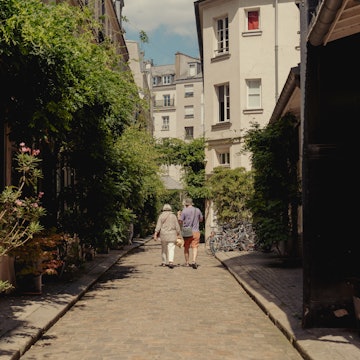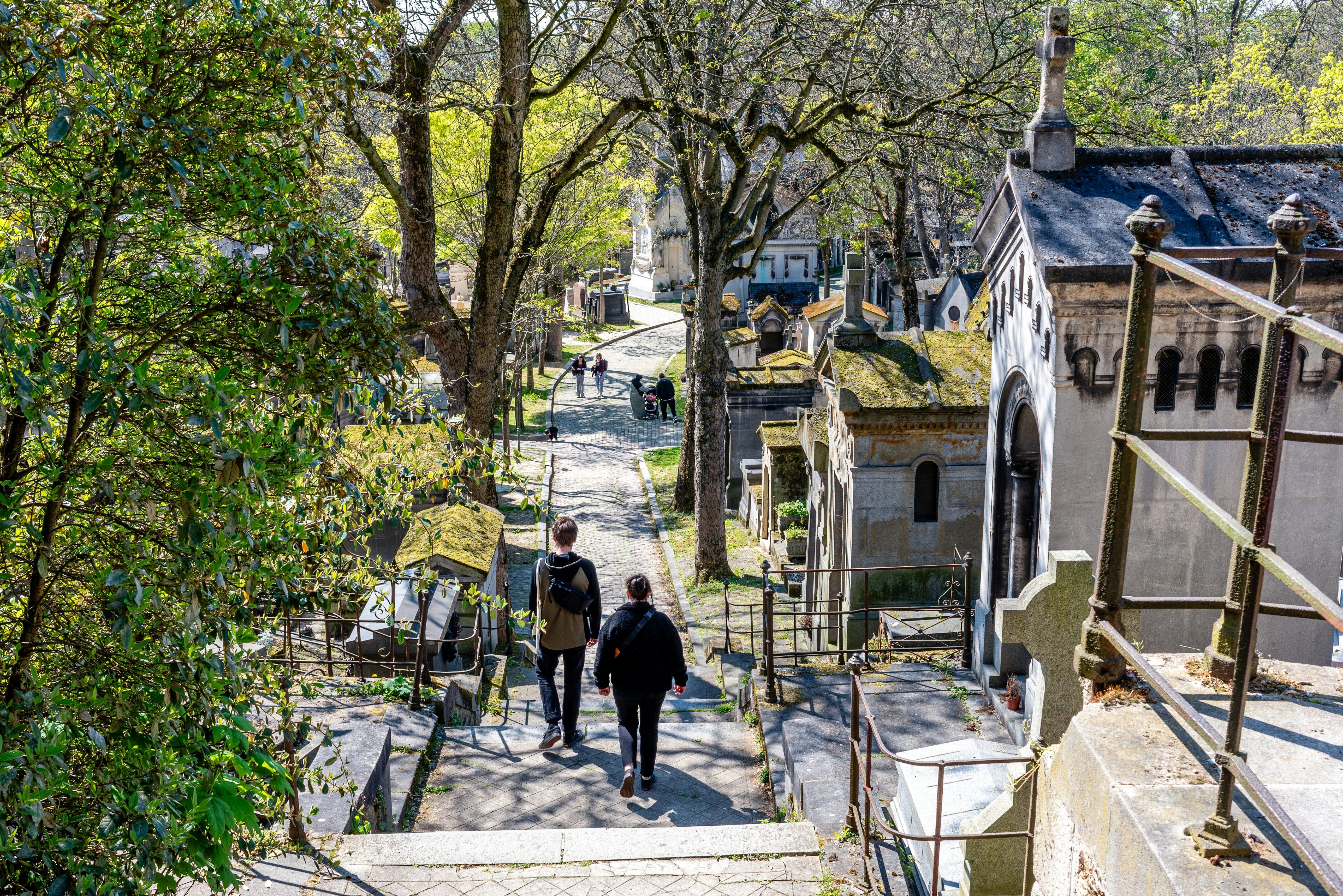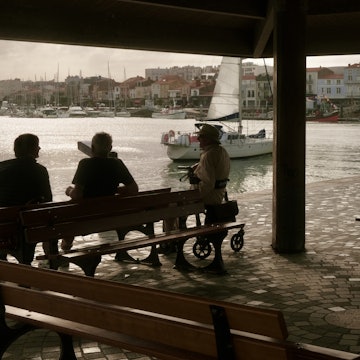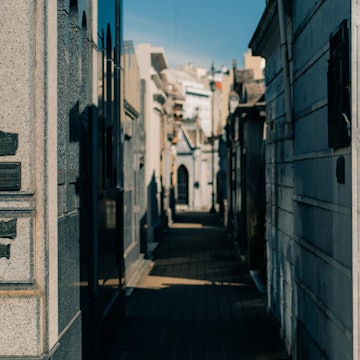
The Lonely Planet guide to Paris' Père Lachaise Cemetery

Jun 6, 2025 • 6 min read

Cimetière du Père Lachaise is the resting place of many celebrated Paris residents. mehdi33300/Shutterstock
Opened in 1804, Père Lachaise in Paris is the world's most visited cemetery. Its 70,000 ornate tombs of the rich and famous form a verdant, 44-hectare (108-acre) sculpture garden in the city's 20th arrondissement.
When commissioned in the early 19th century, architect Alexandre-Théodore Brongniart envisioned a space that would embody nobility without grandiosity, simplicity without neglect, and invoke religious sentiments without fear.
He aimed to create a place of peaceful remembrance, with a melancholic charm based on a combination of nature and monuments. Inspired by English gardens, the cemetery was meticulously planned, with winding paths and a significant portion dedicated to nature.
Today, as you enter, the cacophony of the city fades away and the graves seamlessly blend into the undulating landscape, creating a feeling of beautiful strangeness, as if you were suspended between two worlds. Here’s what you need to know to plan your visit to one of the world's most famous burial grounds.
When should I go to Père Lachaise?
From spring to autumn (March to November), Cimetière du Père Lachaise is open from 8am to 6pm on weekdays, and from 9am on Saturday and Sunday. The latest you can enter is 5:15pm. Visitors are asked to leave the cemetery 30 minutes before closing; the gates are locked at 6pm.
In the height of summer, you might prefer to arrive early in the morning or later in the afternoon to avoid the heat. Although there are plenty of trees for shade, there are not many places to sit. Note that opening hours are slightly shorter in winter.

How much time should I spend at Père Lachaise?
You can spend as little time or as much time as you like at Cimetière du Père Lachaise – but two hours is a good minimum. Just remember that this is a functioning graveyard where people still come to pay their respects to loved ones. That means you obviously shouldn’t climb on tombs, and it’s best to keep noise levels low. If you see a hearse, it means someone is recently bereaved and you should keep your distance.
Are there any Père Lachaise traditions to be aware of?
Like all cemeteries, the boundaries between worlds blur at Père Lachaise, and the cemetery has its own superstitions and esoteric rituals associated with its iconic graves. For example, couples renew their vows in front of Héloïse and Abélard's tomb in Division 7, seeking eternal love.
Oscar Wilde's tomb (Division 89) has long been the object of passionate kisses believed to bring luck in love. Journalist Victor Noir's effigy (Division 92) is central to erotic morbid fertility rituals. Laying hands on the dolmen of medium Allan Kardec (Division 44) is believed to grant wishes. Lastly, the ritual offerings left on Jim Morrison's grave (Division 6) perpetuate a cult (mainly based on alcohol).
What’s the best way to see Père Lachaise?
When visiting the Cimetière du Père Lachaise, you must first choose the best entrance – only three of them are near metro stations. The main entrance is located on bd de Ménilmontant near rue du Repos. The closest metro to the main entrance gate is Philippe Auguste on Line 2. If you don’t have time to circle back, you can exit from a gate closer to an alternative metro station such as Père Lachaise or Gambetta.
Although it may not look that big on an online map, everything is very spread out. If you have limited time, or there are specific graves you want to visit, plan your itinerary in advance with this interactive online map before you go. You can also download the map at the entrance via a QR code.
Wear comfortable shoes; as well as being vast, the paths are uneven and there are steps. Bring water to stay hydrated, but also note that food and drink should not be consumed in the cemetery (water is obviously an exception).
While it may seem like a living museum, Père Lachaise is very much a place where people come to remember their loved ones and is not a Disneyland of death – a quiet, respectful visit is expected.

How much do tickets cost?
There is no cost to visit Père Lachaise.
What are the must-sees?
Père Lachaise serves as Paris' most important necropolis. Inspired by the Panthéon in the city's 5th arrondissement, this is where figures who shaped the French nation are honoured. However, at the time of its inauguration, it was overlooked by Parisians due to its location far from the city center.
To enhance its appeal, the city of Paris relocated the graves of famous figures such as Molière and La Fontaine to Division 25, and had an impressive sepulchre erected for the mythical medieval lovers Héloïse and Abélard in Division 7.
Over time, politicians, scientists, artists and writers followed, solidifying Père Lachaise's reputation as the eternal resting place of the renowned. Today, the entire site is recognized for its rich historical heritage. All funerary steles dating to before 1900 are listed as Historical Monuments, as are 14 of the cemetery's monuments – these are works that are classified for holding public interest from a historical or an artistic perspective.
The cemetery is not only a resting place for Paris' celebrated residents. It stands as an otherworldly space where extraordinary funerary monuments coexist with the graves of both famous and lesser-known individuals, each still cherished by someone.
Some of the highlights of a visit include the Monument to the Dead, the Columbarium, the sepulchre of lovers Héloïse and Abélard, and the graves of:
Irish writer Oscar Wilde
Rock star Jim Morrison
French singer Édith Piaf
French writer Marcel Proust

What is the most visited grave in Père Lachaise?
The grave of Jim Morrison (1943-1971) remains the most visited site in Père Lachaise (Division 6). Other popular gravesites include the tombs of Oscar Wilde (division 89), the composer Frédéric Chopin (Division 11), the playwright Molière (Division 25) and the poet Apollinaire (Division 86).
Other notable figures buried here include the writers Proust, Gertrude Stein and Colette, actors Simone Signoret, Sarah Bernhardt and Yves Montand, painters Pissarro, Modigliani and Delacroix, chanteuse Édith Piaf, and dancer Isadora Duncan.
Don’t miss this secret spot near Père Lachaise
Below Père Lachaise, Jardin Naturel Pierre-Emmanuel hosts native plant species from the Paris region, offering a glimpse of the nature of this area when it was still rural. With minimal mowing to respect natural cycles, the meadows allow native vegetation to thrive.
A key biodiversity reserve, it provides a habitat for frogs, newts and water lilies, and contrasts radically with the usual meticulously arranged parks of Paris. It's well worth a wander while you're here.

Are there restrooms at Père Lachaise?
There are limited toilets (BYO toilet paper to be safe) near the cemetery entrances.
Is Père Lachaise accessible?
Not really – there are some areas that you can visit via flat pathways, but beyond these, the terrain is uneven and there are many steps. Benches are also limited – worth noting for those with reduced mobility.
This article was adapted from Lonely Planet’s Experience Paris guidebook, published in June 2024.















